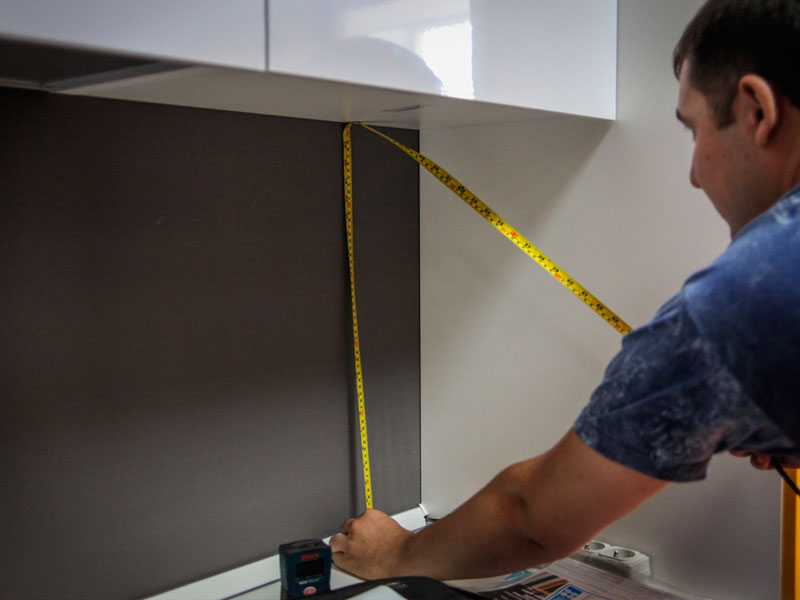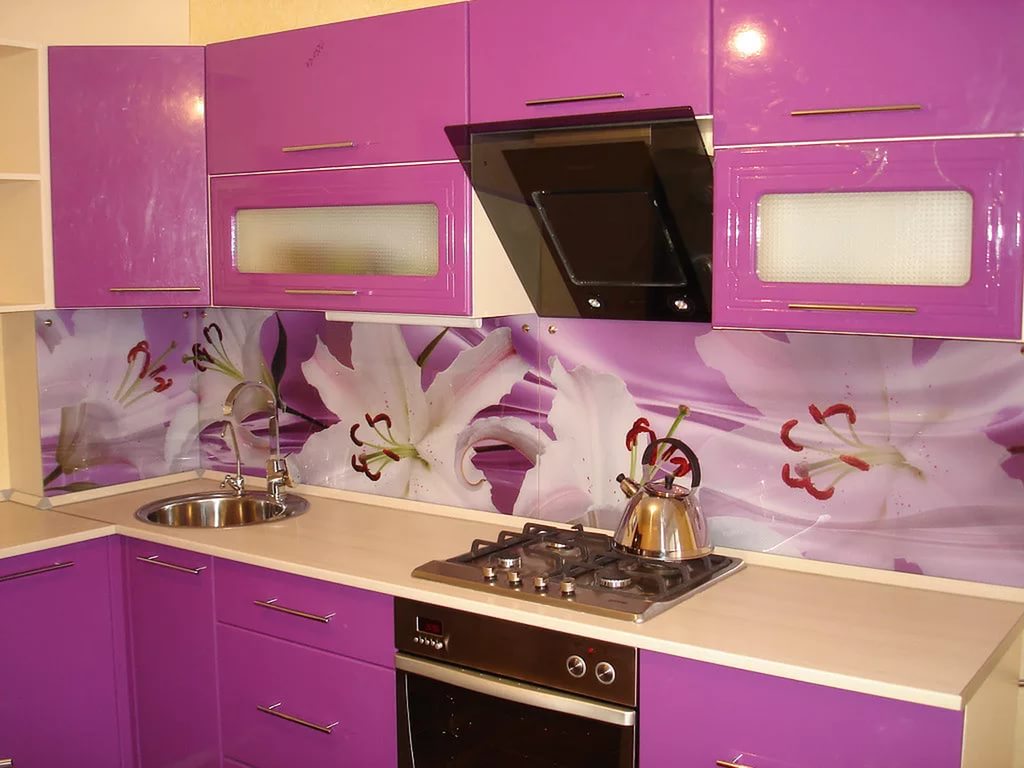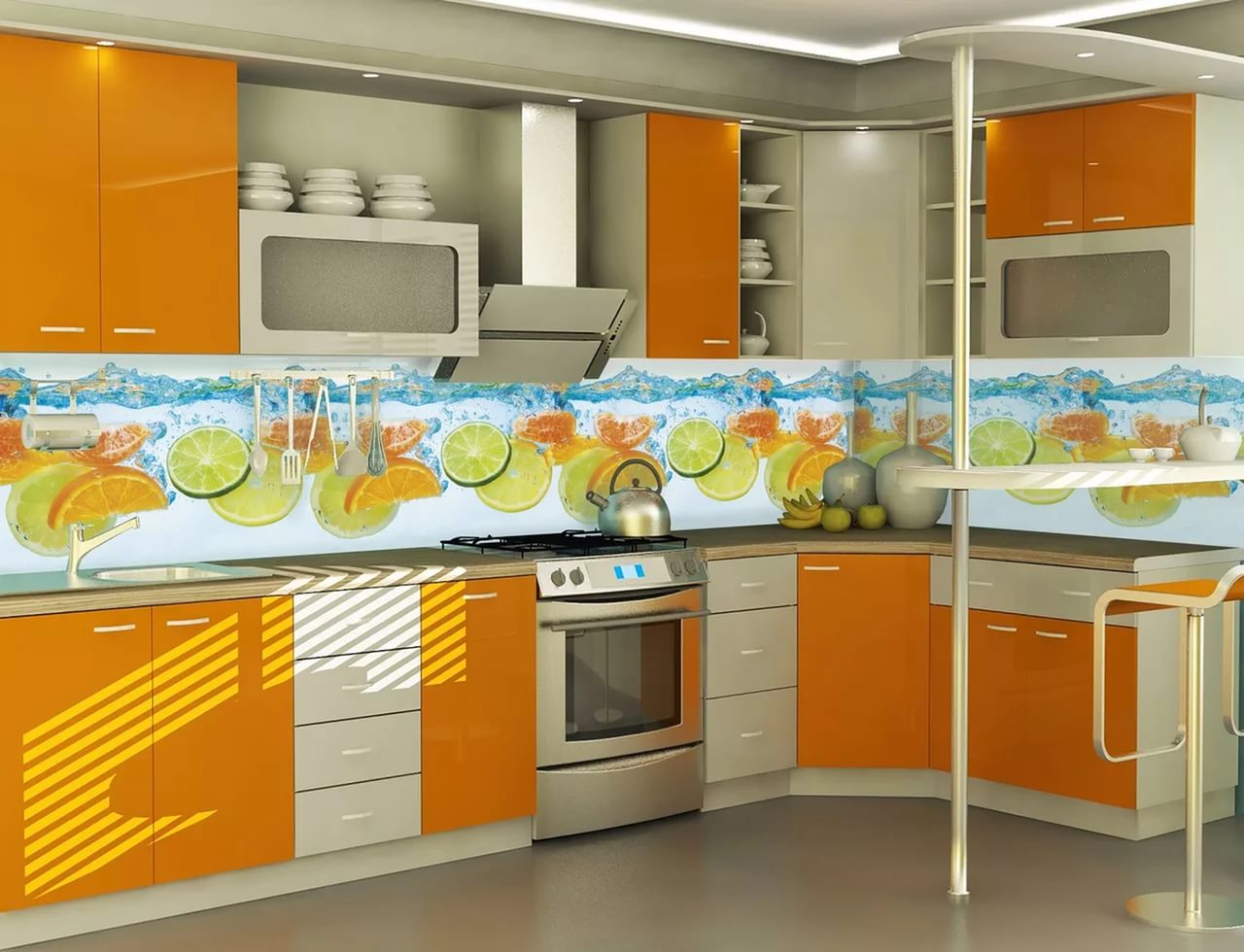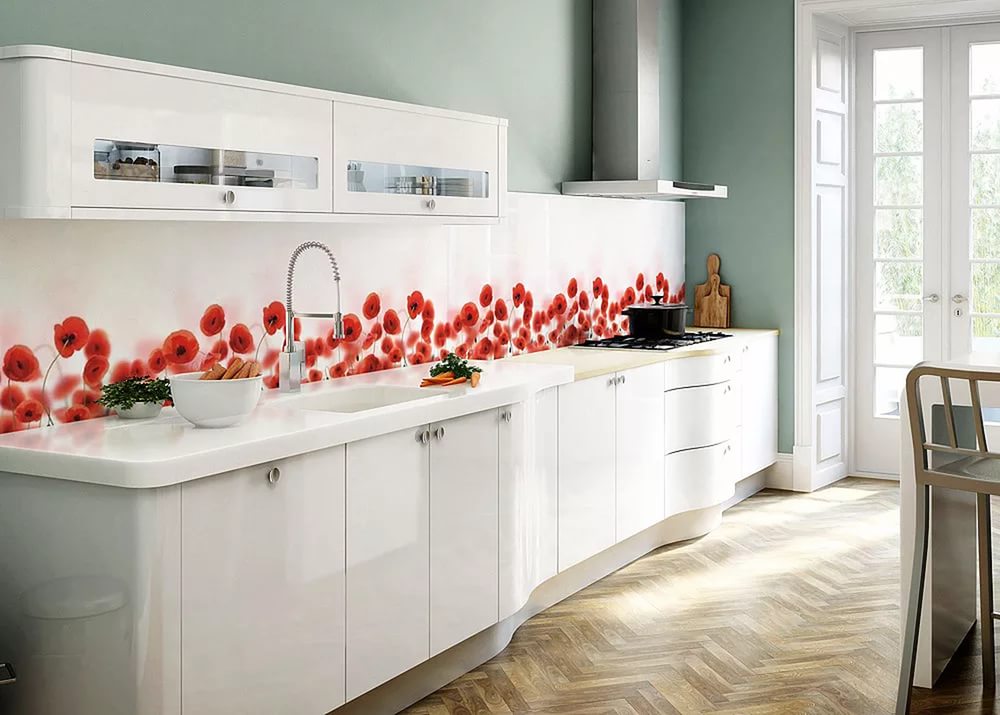Plastic apron for kitchen
An apron for a kitchen set is a useful and even necessary interior detail. It can be not only ceramic, but also plastic - let's take a closer look at this option.
A sink for washing dishes, a cutting table, a gas or electric stove - most often these kitchen elements in our apartments are located along one wall. In the process of cooking, splashes of water, steam and fat inevitably fly from the sink and stove, and the process of cutting food leaves noticeable traces. Therefore, the wall adjacent to the sink, stove and table can quickly lose its presentable appearance.
For this reason, it is customary to design the working space of the kitchen with the so-called apron. This element is a large "overlay", which should protect the surface of the wall. The apron is always made of a material that is resistant to moisture and easily washed from dirt.
Undoubtedly, a ceramic tile apron remains a classic option. However, it is distinguished by the highest cost - and in the process of repair I really want to save money. A good alternative can be a panel made of high-quality plastic - durable, beautiful and inexpensive.
A plastic apron is made from polymeric materials - polycarbonate or polyvinyl chloride. Plastic models are distinguished by a wide variety of textures and patterns, they can be both glossy and matte. According to their characteristics, they are not inferior to ceramics - and in some parameters even surpass it.
Advantages of a plastic apron
What are the advantages of a plastic backsplash for a kitchen wall?
- First of all, this option is extremely low cost. The issue of price becomes especially important when it comes to a spacious kitchen, where it is necessary to cover a significant section of the wall with an apron. In order to tile it, it would take a lot of money - but plastic allows you to spend a minimum of money.
- Models made of plastic have an attractive appearance. Due to the variety of design options, you can choose an element that fits perfectly into the interior of the kitchen - and will look solid and aesthetically pleasing. It is a mistake to think that plastic looks cheap - modern technologies allow you to create very beautiful and sophisticated products.
- The apron collects a minimum of dirt and is easy to wash. Drips and stains from water, droplets of fat, sediment from evaporation - all this is quickly removed from the plastic surface with an ordinary damp sponge. Plastic can be washed using household chemicals - the material will not suffer, most importantly, do not use abrasive powder products.
- The seams between the component parts of the panel are very small, almost invisible. Therefore, even after long-term use, dirt does not clog in them.
- Plastic is well tolerated by difficult operating conditions. It calmly reacts to high humidity, does not deform from temperature changes, does not fade from sunlight.
- The plastic panel is easy to install. For accurate fixing of ceramic tiles, it is necessary to have the skills of repair work - in addition, the tile dries for a long time. Plastic is assembled by hand in a couple of hours - you can use the kitchen immediately, without a long wait.

The disadvantages of such models include only the sensitivity of the material to abrasive influences - however, almost all materials have a similar disadvantage. In order for the plastic to retain its presentable appearance for a long time, it is enough just not to scratch it and not to use powders when cleaning.
How to fix an apron on the wall?
How exactly is a plastic apron fixed on the kitchen wall? There are four main ways - they are all convenient and quite simple. Let's take a closer look at each of them.
On special profile guides
As already said, plastic apron - a very inexpensive purchase. Therefore, many people prefer to experiment with design, replacing the panel with a new one from time to time. If you suspect that in a couple of years you will want to refresh the interior, then it is most reasonable to mount the cladding on the profile guides - so you can freely remove the coating without damaging the wall.

The guides are special metal rails that are fixed horizontally on the wall surface with self-tapping screws. The plastic sheet is simply installed on the guides, as if on a kind of “rails” - and, if necessary, is pulled out and replaced with a new one.
Self-tapping to the wall
If you choose kitchen cladding for years to come and are not going to change it without good reason, then you can immediately use self-tapping screws - plastic is easily drilled through. This installation method requires the most even rough surface - but it will be very convenient if an expensive decorative coating is hidden behind the apron, which you don’t want to spoil with metal slats and even more so with glue. Traces of self-tapping screws on the plastic surface are easy to disguise - simply by placing plugs to match the color.
By the way, with this method of installation, the plastic panel does not fit close to the wall - there is a small space behind it. If desired, electrical wiring can be hidden under the apron. In addition, the self-tapping apron is also easily removed.

On the crate
If the kitchen is quite spacious, and a wide section of the wall is required to be covered with an apron, many people prefer to save effort - and install the cladding directly on the draft wall without decorative trim. In such cases, the wall is not always perfectly flat - however, this is easy to fix with the help of the crate.
The crate is a few metal slats or wooden bars attached to the wall around the perimeter of the future apron. First, a kind of square is created on the wall, matching the size of the apron. Then additional horizontal and vertical strips are fixed inside it with self-tapping screws, giving the structure greater stability and strength. A plastic panel is attached to the resulting crate - also with self-tapping screws. Between the apron and the wall there is some space where you can lay electrical wiring or, for example, make a backlight.

On glue
And finally, the easiest way to install the cladding is to put it on the glue. It is best to use liquid nails. The glue is applied in thin strips at a short distance from each other, and then the plastic panel is pressed on top.
The main advantage of the method is the speed and ease of installation. But it must be borne in mind that the plastic panel can only be glued to a perfectly flat wall. If the surface has even slight differences in height, the apron will not fix well and can quickly fall off.
plastic apron cost
How much does a plastic apron cost? The exact price always depends on the material, decorative design of the apron. For example, polycarbonate is cheaper than polyvinyl chloride, a panel with a uniform texture will be cheaper than a panel made to look like marble or wood.

On average, the cost of a plastic apron is about 1,500 rubles. When choosing a panel, it is not recommended to consider too cheap models - they may turn out to be of less quality and durable.
External variety of plastic aprons
What design possibilities does a plastic apron provide when installed in a kitchen? The appearance of the panels is very diverse. The simplest variety can be called ordinary plain aprons or PVC panels that imitate lining. But if you want to create a truly unusual design in the kitchen, then you should pay attention to aprons with a pattern or artistic texture.
- A plastic apron for tiles, mosaics, natural stone or wood is very popular. Such a surface quite convincingly imitates granite and marble, wood species, colored glass, brick.
- An interesting variety can be called models with a color pattern. The image is applied in two ways - it can be embossed on the plastic itself or on the film, which is a decorative layer of the plastic panel. The options for drawings are truly endless - it can be flowers, natural or urban landscapes, still lifes and much more.
- The plastic apron can have a glossy or matte finish. Which one to choose depends on personal preference. However, keep in mind that you will have to take care of the shiny surface more carefully - dried water splashes and droplets of fat will be especially noticeable on it.
In general, a plastic apron fits perfectly into any interior and in appearance practically does not differ from more expensive materials. If you are looking to save on home repairs, this design option can be a real find for you.




